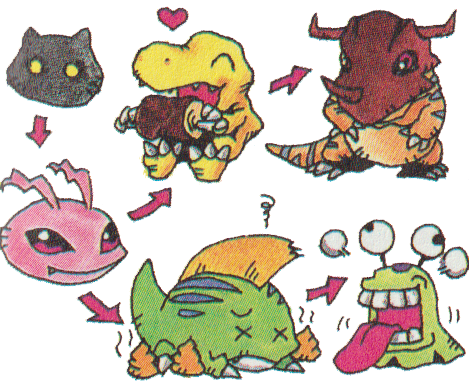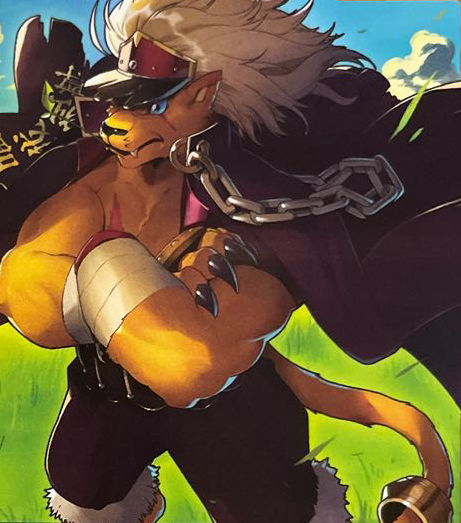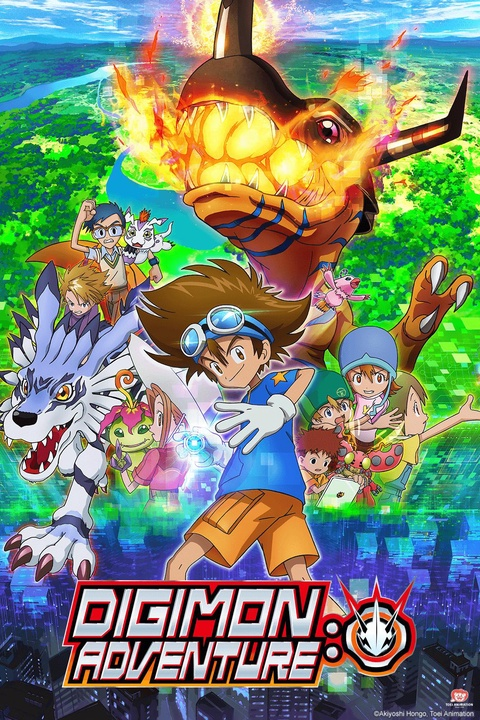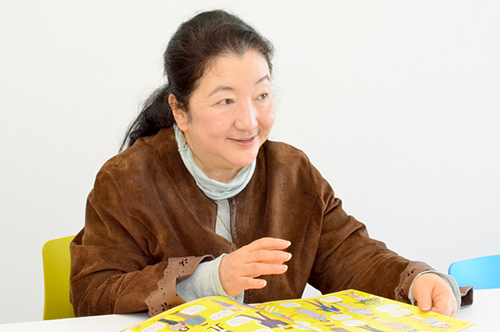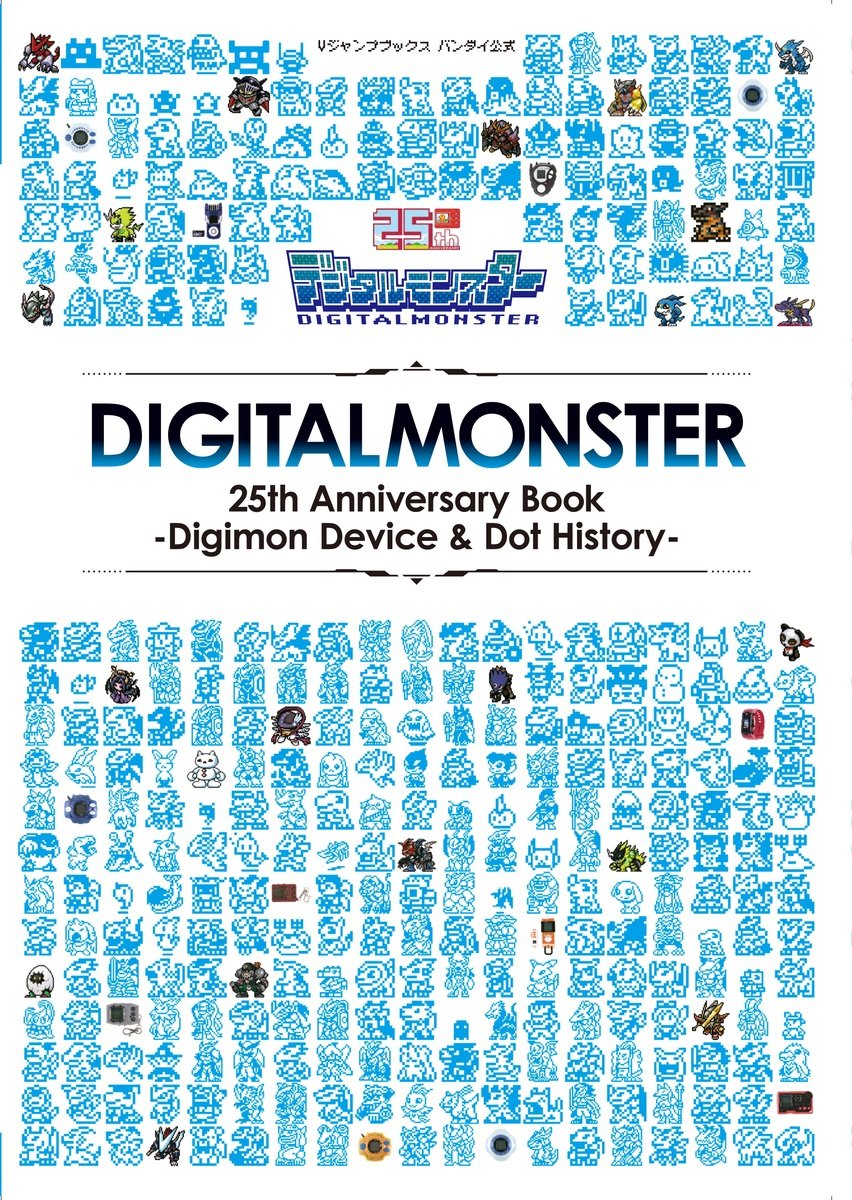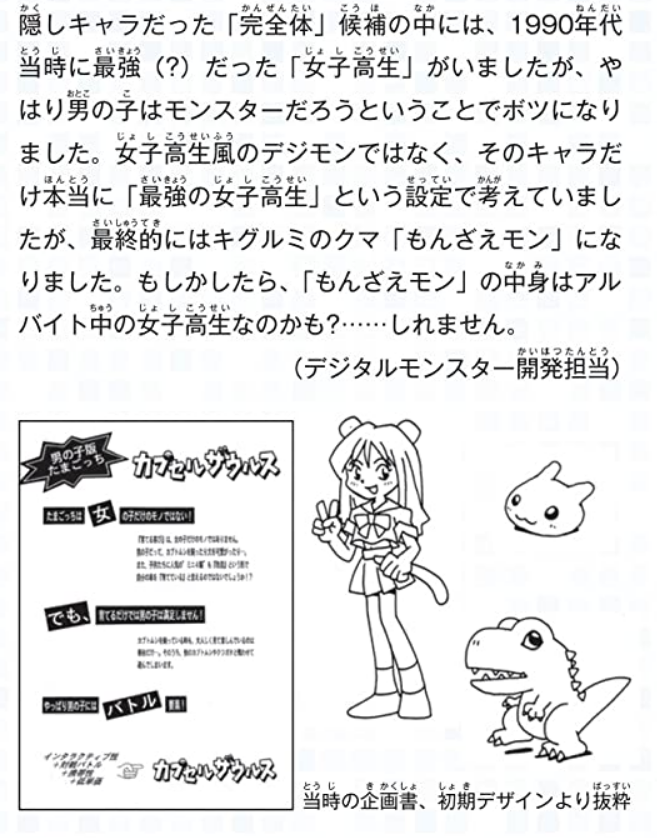The Strongest Digimon Part 1: The First Strongest Digimon
The topic of the "Strongest something" isn't uncommon for many franchises, although some have this as being more "important" due to being a focus for the franchise, and Digimon is kinda of one of them.
The topic of the "Strongest something" isn't uncommon for many franchises, although some have this as being more "important" due to being a focus for the franchise, and Digimon is kinda of one of them.
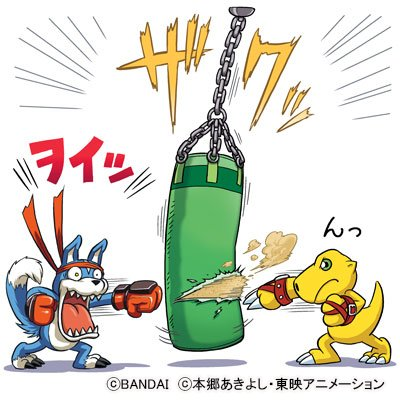
Digimon is a franchise born to be "Fighting Tamagotchi", so the core of it was to expand on Tamagotchi's original growth system to include a fighting mechanic so that multiple "tamers" could train their Digimon and make their evolve into the perfect fighting monsters 
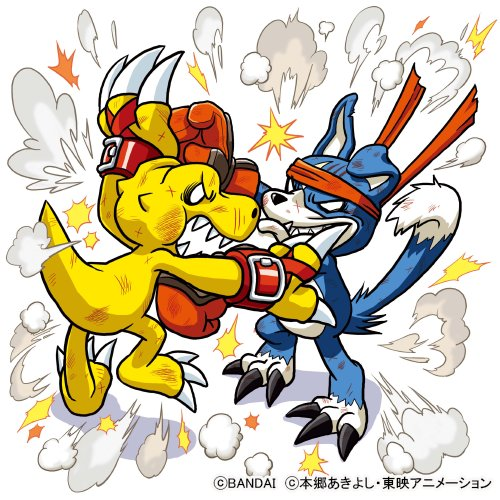
However there's a bit of nuance on that, that is sadly lost in the localized terms for the Evolutionary Levels. If you know Digimon for its official localization, depending on which one you know, the terms below are the ones that you are familiar with. 

The localized terms for the evolution start with the "In-Training" into "Rookie" and finally "Champion". Those are terms that already start with a focus on the fighting and although they make sense when thinking of that a bit of nuance is lost. 

In the original terminology, the terms are "幼年期 1/2" (Yōnen-ki), 成長期 (Seichou-ki) and 成熟期 (Seijuku-ki). Instead of terms used to put the Digimon in fighting terms, they are all terms for normal growth and connect Digimon with its Tamagotchi origin. 

After being born from the Digieggs the Digimon start as Yōnen-ki (幼年期) that can be seen even two times in a single evolutionary line. The meaning of Yōnen (幼年) is literally that of childhood or infancy. 



After the Childhood stage Digimon enters Seichou-ki (成長期) and Seichou (成長) literally means "growth; grow to adulthood", that makes a lot of sense because the next stage is Seijuku-ki (成熟期) and Seijuku (成熟) literally means "maturity". 

As explained in the settings, is in that stage that Digimon are considered to be "fully grown" and most Digimon stops their "evolution" after that stage. It's in this first "natural stage" that the Digimon are the closest to their origin as Tamagotchi. 

If you were to look into the evolution requirements from "In-Training" up until "Champion" you would see that no fighting is necessary. Yes, the terms that are mostly based on fighting are used for the levels that don't need necessarily to really fight... 

Instead, those levels are all based on how you take care of your Digimon. If you are training, letting the Digimon sleep, feeding it correctly, etc. That is entirely based on the original Tamagotchi mechanics that are about you taking care of a baby that needs to become an adult. 





It's even more curious when you look into the meaning of the last part of the terms that I didn't talk about before. All the ones from Childhood up until Maturity are referred to as "Ki (期)" that means means "Period" or "Age". 

That is why the localized terms such as "Baby" for "Childhood Period", "Child" for "Growth Period" and "Adult" for "Maturity Period" are a better representation of what those levels really are. They are just Digimon growing naturally from babies into adults. 





the next two levels, known as Ultimate and Mega in the localizations, are instead known as "Kanzen-tai" (完全体) and "Kyūkyoku-tai" (究極体). As you can see, the term used in the end isn't one used for Period/Age anymore "体" (Tai) here stands for "Body/Form". 

While Digimon could grow from babies into adults only by having a "good life", Digimon could only go past Adults after various fights. Instead of a new stage in life, those levels are the "Perfect Body" and "Ultimate Body". 





This is something that you can notice better by looking at the very first "Perfect Bodies". Metal Greymon, Mamemon and Monzaemon. Those are all Digimon with artificial changes to their bodies in order to fight better, not just new "stages" in life. 

After numerous fights, this Digimon needed to mechanize its own body in order to survive. Depending on the settings, a virus affected the process and the merging wasn't a complete success. Still is a very powerful Digimon with a power said to be equal to a nuclear warhead. 

Not much is known about the nature of Mamemon other than being a mutant Digimon that needed to evolve to survive the hard nature of the Digital World. It's cute but powerful, able of turning its hands into bombs and throwing at the opponent. 

Monzaemon is in fact, just a suit. In order to survive and become stronger, a Digimon moved inside this suit and somehow, this gave power. It's a strange lovely Digimon that uses hearts and love to attack. 

None of the original Perfect Digimon represented a natural change for the Digimon, they weren't growing after adulthood. Instead due to the harsh environment in the Digital World and the adults fighting among themselves, Digimon needed to artificially enhance themselves. 

And that makes the term "Perfect Body" and "Ultimate Body" have much more meaning in contrast to the first "evolutionary" levels that simply makes reference to natural growth. 

In order to survive the Digital World's environment, the Digimon needed to evolve past their Adulthood and the harshness of this process was the first way to measure the strongest Digimon. Let's look at the original evolutionary chart. 


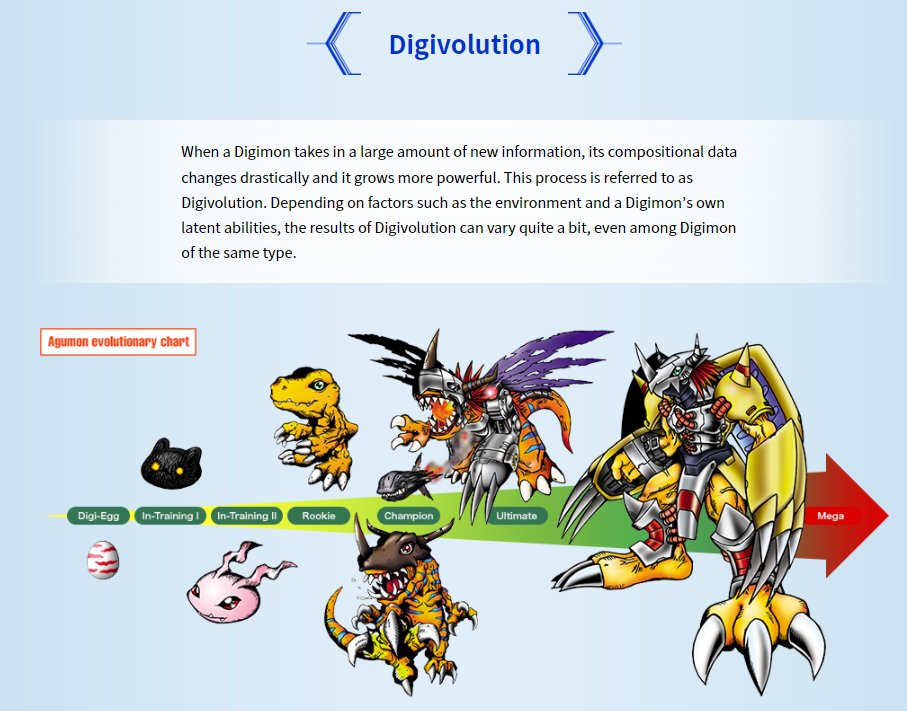
The Digimon that evolve from Metal Greymon are the ones that need nearly perfect care from their Tamer, Mameon evolves from the ones that need a derate care and Monzaemon evolves from the Digimon that needs the worst care. 

This would ultimately mean that Digimon like Greymon would start much better than a Numemon and that would mean that the harshness that the surviving Numemon needed to go through would be much higher than that of Greymon... 

The conclusion of this was explained in an interview with the Development Staff for the "Digital Monster Ver.20th" when one of them explained why Mamemon was his memorable due to the necessity of making Digimon evolve into them. 


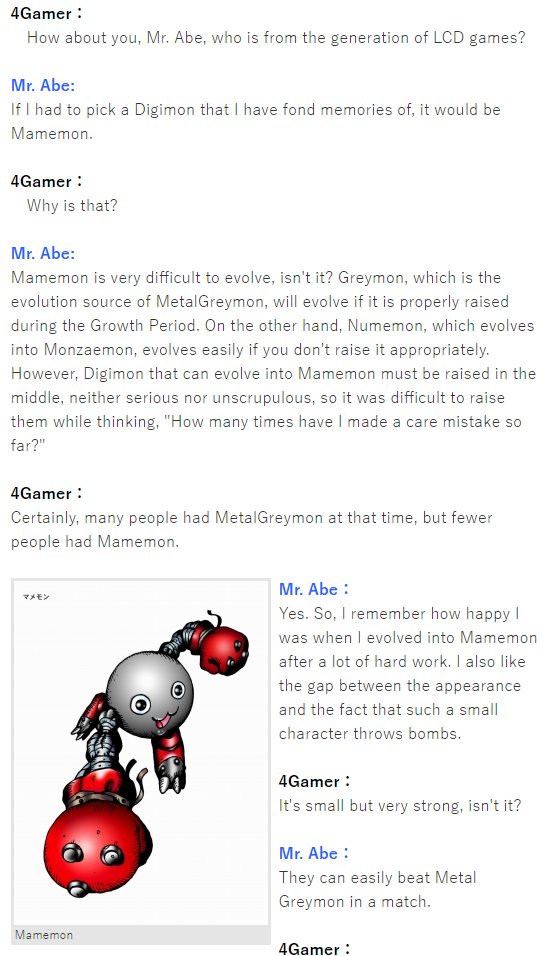
He also explained that as a remedy to people who weren't able to get the best results at the Maturity Level, the Digimon who evolved from weaker Adults would, in fact, become the strongest Perfects. As such, Mamemon can easily defeat Metal Greymon in a match. 



And of course, orignally Monzaemon was the strongest Perfect Body. For those who were able to win battles with their Numemon, they would be gifted for not giving up with the strongest of all Digimon, a Digimon that shows love for their tamers that didn't give up on them. 



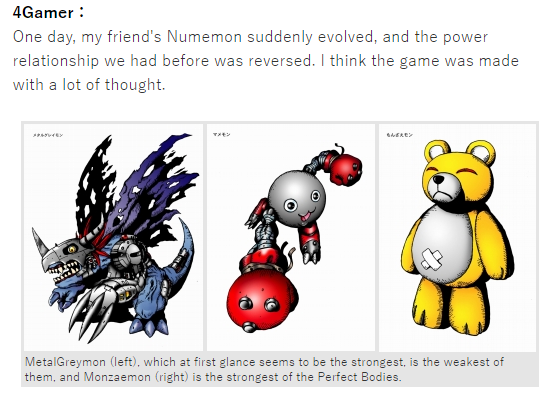

Those details from the old times were of course a part of the Digimon settings. Mamemon is recognized as a "small, but it's strong" in the settings with it even being called "the strongest, except from one other Digimon" in the most recent profile. 



Although one of the most memorable uses of this was in Cyber Sleuth when Mirei used the Evidence of the Sin from the 7 Great Demon Lords to create the ultimate Digimon that would bring a new value to the world, and that took the form of Monzaemon. 

Even with Monzaemon's concept still being used in the later "Digital Monster" versions, the change into the Home Console games would bring a different face for the strongest Digimon and more. But that is the content for my next thread. 



• • •
Missing some Tweet in this thread? You can try to
force a refresh


